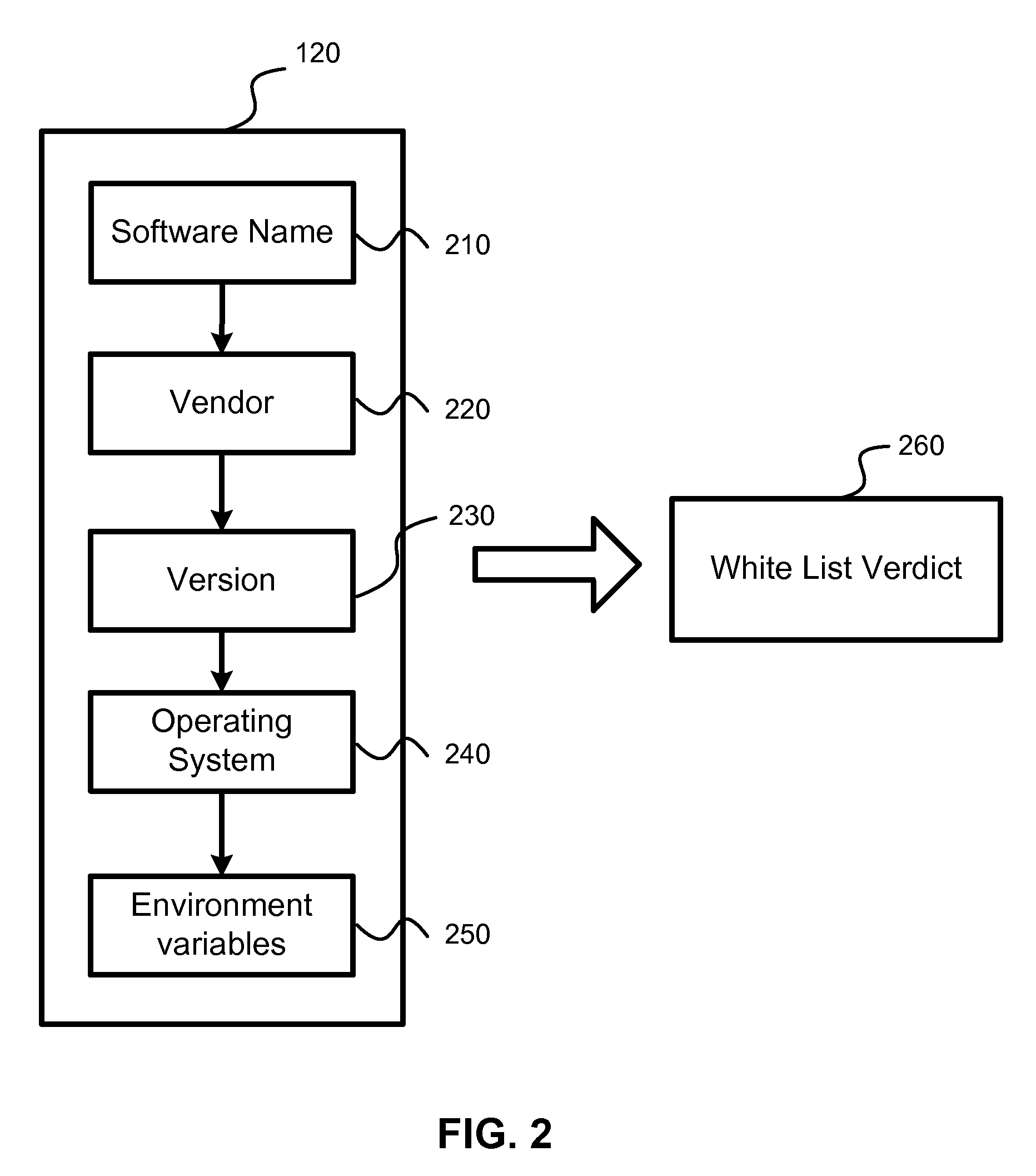Detection and minimization of false positives in anti-malware processing
a technology of anti-malware and detection and minimization, applied in the field of anti-malware technology, can solve the problems of significant inconvenience for computer users, service problems and loss of e-mail capability, and inability to adequately prevent file exchange or e-mail mediated infections
- Summary
- Abstract
- Description
- Claims
- Application Information
AI Technical Summary
Benefits of technology
Problems solved by technology
Method used
Image
Examples
Embodiment Construction
[0039]Reference will now be made in detail to the preferred embodiments of the present invention, examples of which are illustrated in the accompanying drawings.
[0040]According to the exemplary embodiment, a method, system and computer program product for detection of false positives and correction of a white list is provided. The proposed method and system also provide for timely update of black lists (i.e., AV databases).
[0041]In one aspect of the invention there is a system, method and computer program product for detection of false positive occurring during execution of anti-malware applications. According to the exemplary embodiment, the detection and correction of the false positives is implemented in two phases—before creation of new anti-virus databases (i.e., malware black lists) and after the anti-virus database is created and new false positives are detected. The system calculates a probability of detection of a certain potential malware object. Based on this probability,...
PUM
 Login to View More
Login to View More Abstract
Description
Claims
Application Information
 Login to View More
Login to View More - R&D
- Intellectual Property
- Life Sciences
- Materials
- Tech Scout
- Unparalleled Data Quality
- Higher Quality Content
- 60% Fewer Hallucinations
Browse by: Latest US Patents, China's latest patents, Technical Efficacy Thesaurus, Application Domain, Technology Topic, Popular Technical Reports.
© 2025 PatSnap. All rights reserved.Legal|Privacy policy|Modern Slavery Act Transparency Statement|Sitemap|About US| Contact US: help@patsnap.com



